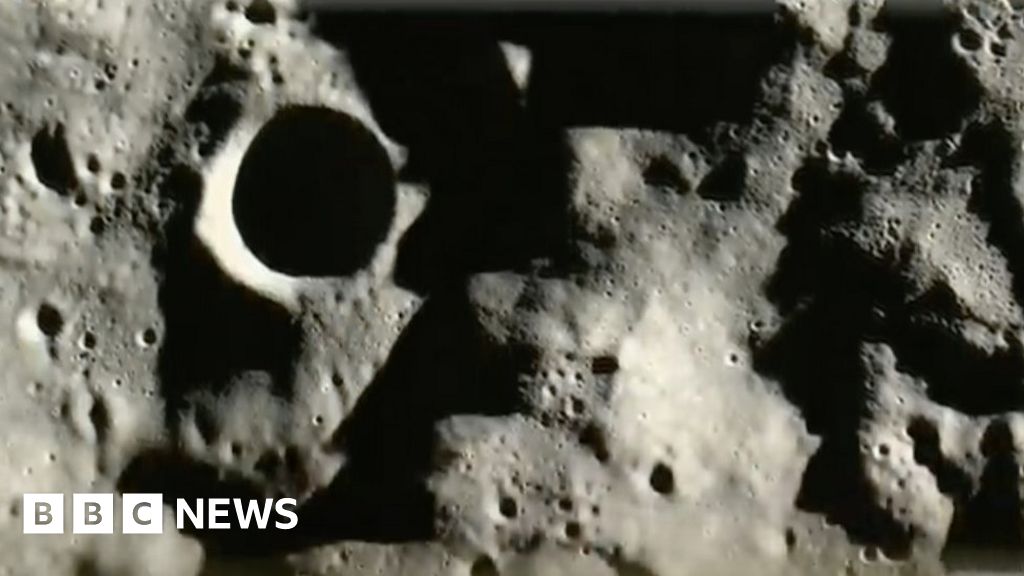
- By George Wright and Catherine Armstrong in London
- BBC News
Pictures taken from the spacecraft over the weekend
A Japanese company hoping to conduct a rare private lunar landing has said it is possible that the lunar lander crashed on the surface.
Communication with Hakuto-R was lost moments before it was scheduled to land at around 16:40 GMT on Tuesday.
Engineers investigate what happened.
Tokyo-based iSpace had hoped the probe would launch an exploration rover, as well as a tennis-ball-sized robot developed by a toy maker.
Launched by a SpaceX rocket in December, the vehicle took five months to reach its destination.
“We have not confirmed contact with the vehicle,” iSpace CEO Takeshi Hakamada said about 25 minutes after the planned landing.
“We have to assume that we were not able to complete the landing on the moon,” he added.
Mr. Hakamada later said that while he was not expected to complete the task, “the company has fully accomplished the significance of this task, gaining a great deal of data and experience through the ability to perform the landing phase.”
A live animation showed the M1 probe ready to touch down after it came within 295 feet (89 meters) of the lunar surface.
The probe was just over two meters high and weighed 340 kg, relatively small and compact by lunar spacecraft standards. It was to perform an hour-long descent maneuver from its orbit, about 100 kilometers above the surface, as it was moving at nearly 6,000 kilometers per hour.
After reaching the landing site in the moon’s northern hemisphere, Hakuto-R was to deploy two payloads to analyze the moon’s soil, geology, and atmosphere. One of them was made by the toy company TOMY, which created Transformers.
The United States, Russia, and China are the only countries that have managed to put a robot on the moon, all through government-sponsored programmes.
In 2019, Israel’s Beresheet mission became the first attempt by a private company to land on the moon. Its spacecraft managed to orbit the moon, but was lost during a landing attempt.
The primary objective of the Japanese mission was to assess the feasibility of commercial launches to the lunar surface. It was iSpace’s first test of what they hope will be a series of commercial landers over the next few years, each more ambitious than the last.
The company’s vision is to provide commercial services for a sustainable human presence on the Moon, such as sending equipment for mining and rocket fuel production.
According to Dr. Adam Baker, director of the space consulting firm not involved in the project, Rocket Engineering, a successful landing would have represented a “step change” in commercial involvement in space exploration.
“If it’s affordable and repeatable, it opens the door for anyone willing to pay the price to land something on the moon,” he told the BBC.
Watch: A demonstration of a miniature lunar robot designed to roll across the lunar surface

“Certified food guru. Internet maven. Bacon junkie. Tv enthusiast. Avid writer. Gamer. Beeraholic.”





More Stories
Nintendo is launching a music app with themes from Mario and Zelda, and more importantly, a Wii Shop channel
The Google Pixel Tablet 3 will take another step towards replacing your laptop
Apple still excels at building the best computers